How could you build a great financial education program?
And what might your program cost?
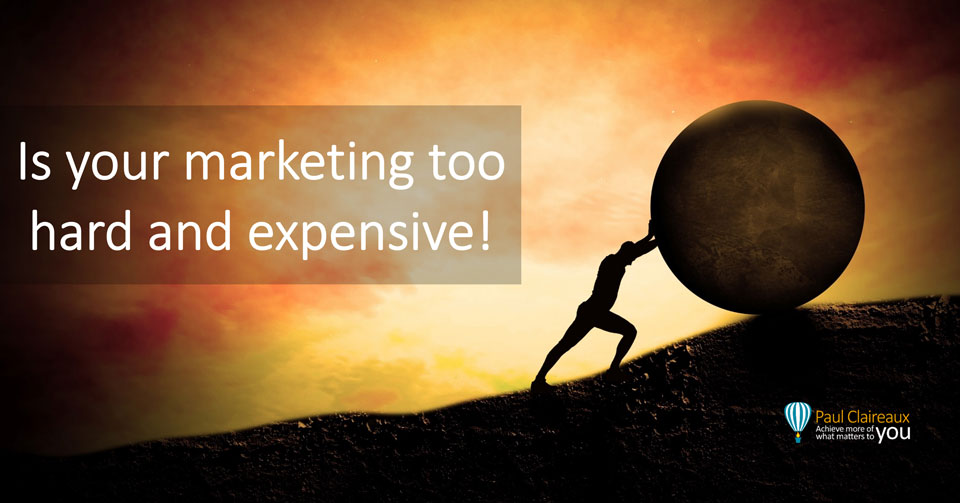
In this series of three posts (for financial planners and advisers), I explore why great financial education programs can cost £200,000 or more over time.
And I show you how to eliminate most of those costs – and the immense work these projects can demand of you.
In the first short post, I explored the question of ‘How much content is enough’ for a sound educational library.
If you’ve not read that post, start there.
In this second post, I’ll outline the steps to plan and build a great financial education library, which reveals why they can be so expensive.
Then, in the third post, I’ll show you how to avoid most of those content costs.
This is a 10 to 20-minute read, depending on your speed.
How do you estimate the cost of an Insights library?
This really isn’t rocket science.
To properly estimate the cost of creating a robust Insights library, you must do two things.
First, account for all of your time, or that of your (financial planning qualified) in-house writer, at a sensible rate.
It seems that some business owners assume their content creation time costs them nothing.
And if you love writing and can afford all the time in the world for it, you’re clearly in a great place.
Just remember that the time you spend on intense content creation is time not spent on other, possibly more profitable, work.
Second, be realistic about the time required to create high-quality content.
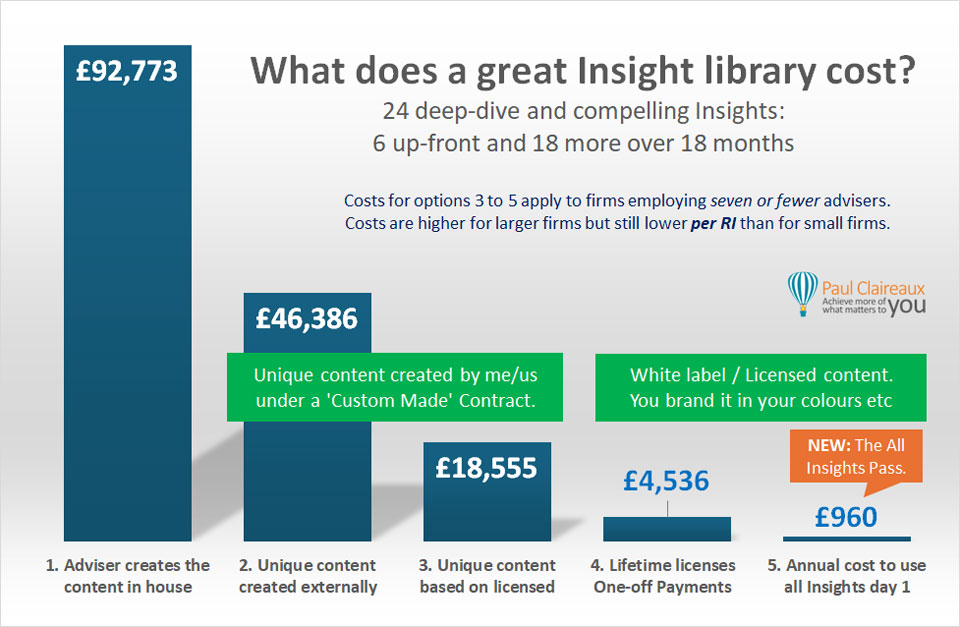 In this bar chart, I’ve made three key assumptions:
In this bar chart, I’ve made three key assumptions:
- An average guide size of 2,700 words, because this is the proven optimal size for engaging content. More on that here.
- That you (or your in-house writer) create Insights (with high-impact visuals) at the same pace as I do – after crafting 500,000+ words of it.
- That your (effective) fee-earning rate is the same as that of an average IFA. Which, according to VouchedFor, is £200 per hour.
If your effective fee-earning rate is £100 per hour, you can halve those cost estimates.
Or double them if your effective rate is £400 per hour.
I believe the effective rate for leading planners is more than the £200 I’ve assumed, so adjust your estimate to take account of your ‘earnable’ rates.
Also, be aware that an experienced content creator may produce high-quality Insights more quickly than you or your in-house financial planner.
So, if you’re a newcomer to content creation, add, say, 30% to those cost estimates while you build your skills, which may take a few years.
The same applies to becoming a highly skilled financial planner.
You can’t build these skills overnight, right?
Shall we debate the pace of content creation?
We could…
But I readily accept that many generalist copywriters pump out content in 25% to 50% less time than I do.
The problems come if those (typically short single-idea) posts have not been through the 12-step process below, and the writer has no qualifications or experience in financial planning.
Content like that really won’t deliver much value to your audiences!
What’s more, some of that rushed content will expose your business to reputational risks if it’s misleading, which too much of it is, as I regularly point out on LinkedIn.
Connect with me there if we’re not connected already.
As an aside, if you’d like me to review any of your current educational content, with more emphasis on the look and writing style rather than the facts, e-mail me with the word ‘SCAN’ to hello@paulclaireaux.com
I’ll then send you a proposal for this NEW feedback service, which I’m told is extremely valuable.
The truth is that Accurate, Balanced and Compelling (ABC) educational content on money (and money psychology) questions takes time to create. And it requires a sound process, as I outline below.
But don’t take my word for it, here’s what one of my clients said after we’d spent 6 months working together to build an incredibly successful program.
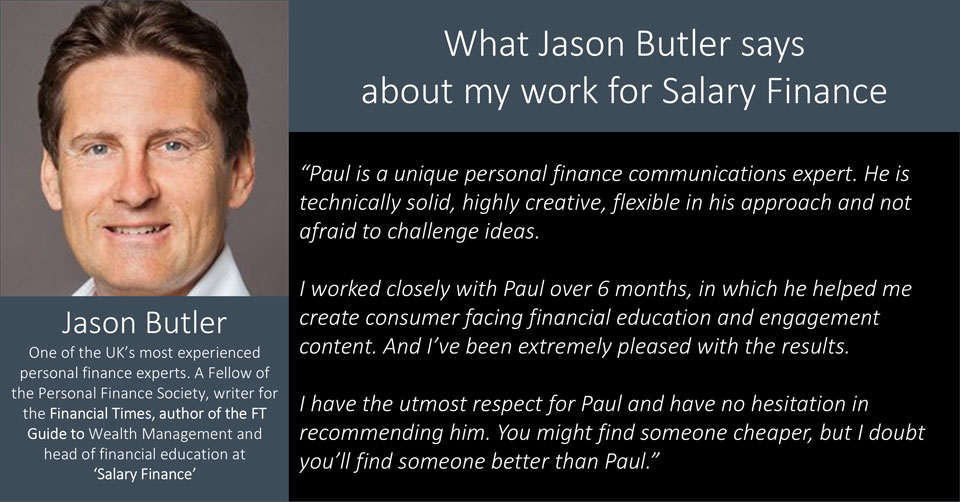 Interestingly, estimates from industry discussions suggest it takes 30 to 50 minutes (per 100 words) to create polished and well-researched works on complex topics.
Interestingly, estimates from industry discussions suggest it takes 30 to 50 minutes (per 100 words) to create polished and well-researched works on complex topics.
And my ‘bar chart’ of cost estimates assumes a work pace in the mid-point of that range.
I’ve also allowed for enhanced productivity from using the best AI tools.
I use the best of these tools now, and they can be helpful at times, but not nearly as much as some claim.
My view is that you need high-quality (ABC) Insights.
And that it must be clear to the reader (or viewer) that the lesson has been written by a human who genuinely understands the topics.
This is hard to achieve if you outsource the entire writing process to a Robot. Those pieces are easy to spot.
So, you still need a qualified (and writing-experienced) human hand on the tiller of your content creation ship.
Of course, if you have an in-house (financial planning-qualified) writer who can create top-quality content (with images) twice as fast as I do, that’s wonderful.
However, you’ll almost certainly save money if we work together because:
- My fees are c. 50% or less than those of an average financial adviser [Source VouchedFor]
- You’ll save another 50% on my time if we create unique derivatives from my extensive (but largely hidden) library of proven educational works.
I’ll say more about my Unique Derivatives content service in part 3 of this series.
How could you build (or enhance) your content library?
Unlike some other marketing service providers, I urge you to get your idea ducks in a row before diving into content creation or recording videos or podcasts.
Building a library of content is like developing a good financial life plan.
And, as you know, the key to a great outcome is in the planning.
Or as they taught us in Sales Training at Clerical Medical in the 1980s…
If you fail to plan, you plan to fail.
Of course, you’re skilled at creating sound financial plans, but if you have no experience in planning and creating great educational programs, this outline of a proven approach should help.
There are, broadly, two phases to these programs:
- Content Planning.
- Content Creation and Promotion.
So, let’s get into those now:
Phase 1: Content planning has three stages:
A. Plan your approach to building your library.
At this stage, I help my clients with a 20-point planning agenda.
This is similar to a fact-finding/discussion document in financial planning, but here the output is a ‘brief’ for the educational content you want created or supplied.
This brief aligns your project with your audience’s needs and wants.
You can use this document to brief anyone* in your program about what you’re building—and why and how.
* This includes another content creator if I’m not available for the writing work – I can at least help you with the planning.
The brief defines your content audiences, the categories of Insights you’re aiming for, the writing styles, the formats (blog posts, videos, etc.) you’ll use, and much more—including a collaborative content review process.
With this sort of project clarity, you minimise production time, errors, and costly reworks. And you maximise the quality, scalability, and longevity of your content.
There’s a lot to like about developing a sound plan – upfront.
B. Generate lots of ideas – across your chosen Insight categories.
You’ll want 5 to 10 content categories, and I can send you a colourful pack with ideas for category names if that helps.
E-mail me at hello@paulclaireaux.com with the word ‘Categories’ in the title, and I’ll send you that.
You’ll then want to offer at least five strong insights in each category. I can think of 10+ Insights in the Money Psychology category alone!
And I’m happy to suggest Insight title ideas for my clients – because most firms struggle with this.
Does this mean you will need 50+ Insights (5 x 10) in your library?
Not at all.
You can get started with far less than that, as I can explain if you’d like to talk.
C. Arrange your Insight ideas into a sensible order to launch
I suggest you start a new educational program with some foundational Insights.
Or, if you’ve already started your program, think about how you could add more foundational content—or strengthen what you have.
The truth is, few advice firms offer much foundational content.
And that’s a pity, because without it, your costs could spiral out of control due to content maintenance and duplicated effort.
Also, if you skip the foundations, you risk confusing your audiences, which again, I can explain if we talk.
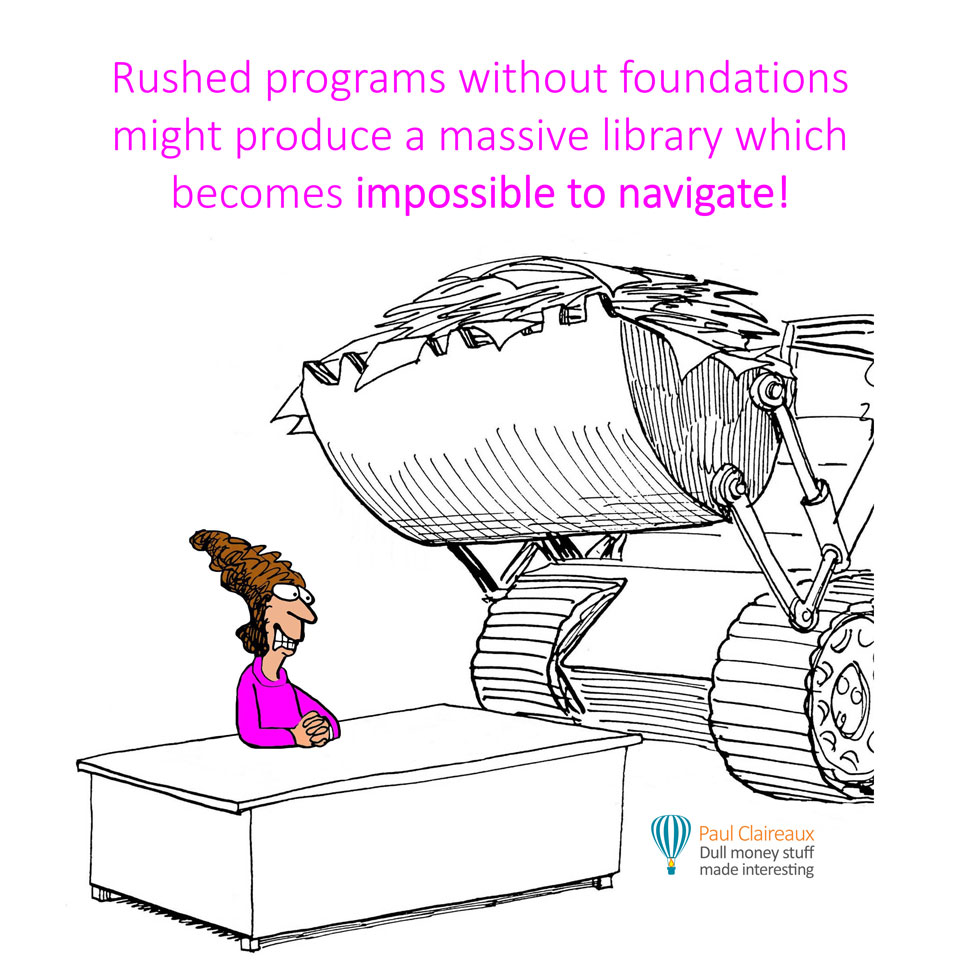 Do you have a log of ideas?
Do you have a log of ideas?
At this planning stage, you will likely develop (or acquire) many ideas you believe could be valuable to your audiences.
So, it’s vital to prioritise the foundational works and log the others for later development.
On custom-made content contracts, I usually maintain a log of ideas for clients.
And we can use that log as a progress tracker in the content production phase, too.
E-mail me at hello@paulclaireaux.com – and ask for a sample tracker.
Don’t throw anything away.
There is no such thing as a bad idea.
That said, most of our ideas are only of real value to non-expert consumers when they’re unpacked, fact-checked and put into plain English!
And this is the work that takes time, as we’ll see now.
Phase 2: The intense work of content creation
Once the ‘brief’ is complete and you have an initial list of ideas, it makes sense to follow these 12 steps for each Insight you create.
Some of these steps may be combined and invisible to others, but a good content creator will follow them to deliver high-quality content on the first attempt.
It might seem that these steps will slow you down, but please trust me on this:
With less haste, you get more speed
Here are the 12 steps:
# 1. Confirm a clear audience.
You’ll have a default audience for your library from the planning phase, so you’ll know who you’re writing for on most of your works.
However, you may go ‘off plan’ at times.
Perhaps you want to create engagement Insights for those adult children of your wealthy clients or for HENRY professionals.
High earners not rich yet!
Or maybe you want to share an occasional technical piece with your professional connections?
Either way, the first task is to define the audience and consider exactly how this particular Insight (or series) could be of interest and value to them.
It’s easy to create a ton of content on topics that interest us personally.
Most of us make this mistake when we start our writing journey.
The trick is to focus on our audience(s), on their knowledge and interests, but this is very hard to do.
The ‘Curse of Knowledge’ effect causes many poor communications – both in our work and home lives.
Listen to Professor Steven Pinker explain this challenge in the first 5 minutes of this interview.
So, try hard to keep your audience’s needs front of mind throughout this content creation journey.
# 2. Craft an engaging (audience-benefit-focused) title.
You must have an engaging title for every guide or Insight you share.
Ideally, you’ll also offer a powerful featured image (or video) to grab your audience’s attention.
Your months or years of effort in creating valuable content might all be wasted if your titles don’t intrigue your readers or video viewers.
You may be amazed at the ten elements to consider in crafting the few words in your Insight titles!
And by the six message types you can use in your titles to ‘hook’ the attention of your audiences.
Just bear in mind that good content creators might change the title (perhaps several times) as they research, uncover and unpack ideas that change their perspectives.
#3. Outline the Insight.
List the sections (or mini-chapters) that you plan to cover.
Give each section an engaging heading and consider what image could bring it to life.
Like your main title and featured image, you will want to keep people engaged in this Insight once they start reading/watching it.
Then, for each section, start to outline the ideas it will cover – and arrange these in an order to flow nicely from one to the next.
You may find it helps to summarise each section under a heading on a large post-it note – so you can move these around a big board until you get the order just right.
This big picture thinking is hard to do while typing on a keyboard – and almost impossible with a small-screened laptop, in my view.
#4. Get early feedback from your key stakeholders.
At this stage, I’d suggest you get early feedback on your Insight idea from the relevant people in this list:
- Your business partners.
- Your boss.
- The sponsor (person paying) for this project.
- Your writing coach. (Ask if you need help with this)
You could skip this stage if you’re 100% confident in your own or your content creator’s knowledge and skills—and they are fully aware of the Insights you already offer, and what else you have planned.
But it’s unlikely that an external content creator will know all of that – at the start of a contract, in any event.
The purpose of this step is to:
- Ensure your key stakeholders are happy with the ideas for the guide before spending much time or money on crafting it.
- Help you identify overlaps with your other Insights (existing or planned).
- Agree on a rough word count for this new work – which you can only do after you’ve outlined the sections.
I recommend you meet face to face (or via video link) to receive and discuss feedback on your content.
A discussion approach saves time, reduces stress and is more motivating for everyone.
#5. Develop the Insight/Guide
In this step, you gather any additional evidence you need to unpack, expand, and fact-check your early ideas.
You then develop those ideas into an early, rough draft.
Of course, if your deeper research reveals that some of (or your core) ideas are flawed, you’ll have to rework your outline or give up on this piece.
This is one reason titles change as Insights are developed!
# 6. Refine the draft into a compelling guide.
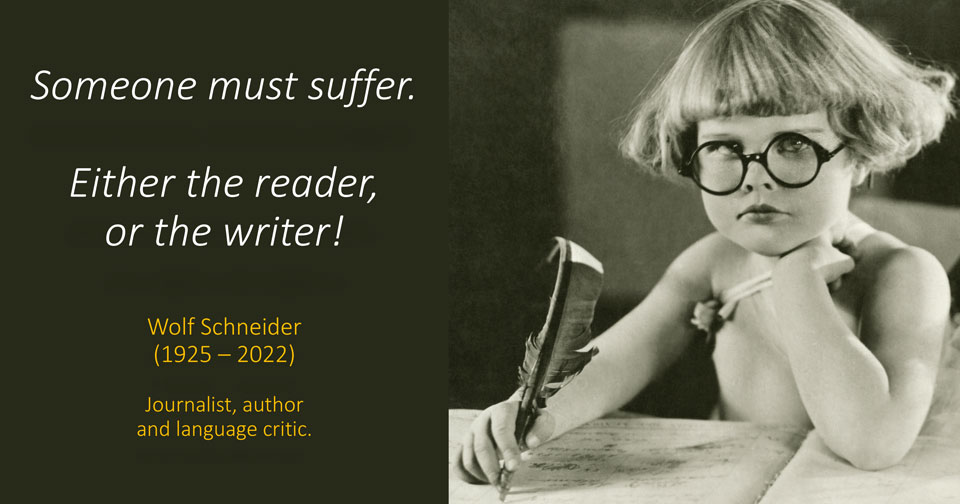 If you thought the first five steps of this process were challenging, I’m sorry, but here’s where the hard work really begins!
If you thought the first five steps of this process were challenging, I’m sorry, but here’s where the hard work really begins!
You’ll need to be prepared to craft five to ten versions of your draft work before you have a compelling deep-dive guide!
And you need to be aware that longer works take disproportionately more time to create than shorter posts.
Yes, there really are diseconomies of scale!
A 4,000-word guide could take 6 to 8 times as long to create as a short(ish) post of 1,000 words.
Why?
Because with longer Insights, you have two jobs.
You must structure and order the whole work, in addition to writing each section.
And the longer the guide, the bigger the (organising) overhead.
That’s why most people feel overwhelmed by the prospect of writing a book.
A book is not (normally!) just a collection of random ideas. It needs order to flow well—from one chapter to the next.
And the same is true of long-form guides.
Thankfully, deep-dive guides deliver many times the value (for your readers) when compared to a few random short posts.
Like writing a good book, the extra investment is worth it, but you may need help or coaching on your first outing here.
Remember, you only need a handful of high-impact, deep-dive guides to transform your business.
So, it’s worth creating (or acquiring) these guides if they help you become one of the few ‘go-to places’ for answers to people’s vital money questions.
Make sense?
# 7. Develop or source some stunning pictures.
You’ll need plenty of images to breathe life into your messages.
And, at times, you might want to show that you have a sense of humour!
You could use real photographs, stock images, and cartoons – commissioned or licensed.
And I suggest you offer a few high-impact charts – but only where they help you paint a thousand words.
Here’s an example.
Just be sure to get help with design if you don’t know how to make images that ‘pop’ out of the page.
Bad (unreadable, unclear or misleading) images are quite common in our sector.
And if you offer those, you only undermine your firm’s reputation.
# 8. Get audience-type feedback and edit again
Ask some non-experts (in the target market for your guide) to critically review your almost-finished insight.
- Did they find it relevant?
- Was it easy to understand?
- Was it a fascinating read?
Then edit again to improve clarity and remove any waffle, technical jargon and MLAs.
Sorry, I mean ‘Multi-letter Acronyms’
We have a lot of those in our sector!
# 9. Agree on any final changes with your key stakeholders.
This second review (like step 4) is best done in a meeting.
The secret to building a great (potentially award-winning) educational library is a strong (and challenging) relationship between the content creator and the financial planning lead person in your business.
As Socrates told us, more than 2,000 years ago, with his ‘Socratic method’, we need to challenge each other in cooperative but argumentative dialogues.
Progress comes when we accept that our beliefs only have value if tested!
Carl Sagan’s Insight is a neat way to suggest a similar, constructively critical approach, I think.
So, the secret to that relationship working well is mutual respect—as we review, discuss, and agree on changes to the content.
This approach delivers superior results because it aligns you with your stakeholders on each message in your guide.
It’s the same as when developing a financial plan.
You work closely with your clients to align their plan to their situation and goals.
So, when I create content with clients, we follow the same (proven) process.
1. The client reviews my work and notes their thoughts and any issues in pen.
2. We meet online so I can hear what they like and discuss any issues they have.*
3. I then make any agreed-upon changes.
4. The client reviews the changes and signs off on the work or…
5. We go round this loop once more.
It is extremely rare for me to need more than one set of changes if we work this way.
* Issues can arise because a message is misunderstood and needs clarification. Or because the client wants messages added, removed, or changed for other reasons.
What I find is that a conversation about content changes (and enhancements) is the easy and fun way to finish a guide.
Of course, if you prefer soul-destroying hard work, I suggest reviewing content with back-and-forth e-mails or comment bubbles in Word documents.
Then you can wrestle with the additional misunderstandings that arise in those text-based comments and the replies!
Joking aside, though…
I don’t know any financial planner who asks clients to type up comments on their financial plan—and I don’t ask my clients to do this either.
In fact, I only enter into contracts in which we agree to have short meetings to review the nearly finished works.
And whether you work with me or another content creator, I urge you to adopt this conversational approach to reviews.
It saves everyone time and stress, and (with the right content creator) delivers the best-quality content – first time, every time.
# 10. Apply the agreed changes and finish the work.
In the old world, you asked a copy editor for suggestions to refine your work for clarity, structure, and style.
You’d then have another person proofread the work, looking for minor errors such as typos and formatting issues.
Nowadays, an AI tool like Grammarly can help with both of these finishing tasks—and will catch most of your typos and sentence structure traps.
These tools are pretty good at detecting common errors, such as the excessive use of the passive voice, as explained here.
Just be aware that some of these (AI Grammar tool) suggestions can make your content sound dull.
So, be selective about the changes you accept.
# 11. Obtain sign-off from the project sponsor.
And yet, this step also seems to be skipped – quite often!
The project sponsor (or their delegate) must confirm they are happy with the work.
If you outsource content creation, your writer needs to know that the person paying for their work is happy with it.
And the same applies if you ask a colleague to create the work for you in-house.
Any content creator needs assurance that their work meets (or, preferably, exceeds) your expectations.
If it doesn’t, they need guidance on what further changes are required.
(If you have to offer lots of guidance on each Insight, you need a different content creator!)
Of course, this step also applies to multi-partner/Director firms, where more than one person creates content.
Your business is far stronger when all key stakeholders review and sign off on your core consumer-facing guides.
This approach gets you all singing from the same hymn sheet.
Message consistency is powerful—with clients, professional introducers, and, most importantly, your team.
Sadly, too much content is published/shared with consumers without proper review by key stakeholders.
And this can lead to communication chaos, as fellow Directors create their own personal versions of various guides.
Don’t get me wrong here…
This muddle arises from good intentions.
Some business owners want a range of people to contribute to their signature consumer-facing guides.
The thing is that the input should have arrived at step 4 in this process.
At this late stage, most of the work is done.
So, you only want a sign-off (and perhaps a ‘Thank You’) for the hard work done.
Or some guidance on a few final (minor) changes.
Just remember, if your key consumer messaging is visibly inconsistent, you’re putting your firm’s reputation at risk.
If you use an external content creator, tell them at the planning stage who to gather input from (stage 4) and who to seek sign-off from.
A good content creator can manage multiple people suggesting changes or additions.
And they must be told who to ask for final sign-off.
# 12. Craft multiple outreach posts to promote each guide.
I suspect you know that you’re completely wasting your time creating valuable ‘How to’ guides unless lots of people visit your website (or other home of your content) to read them!
So, you will want plenty of short (attention-grabbing) posts to draw attention to each guide.
And the good news is that it’s easy to craft a dozen or more outreach posts from a good-sized guide like the one you’re reading now.
Think how many distinct ideas I’ve explored here.
Once you’ve created (or acquired) some excellent guides, you’ll have all the content you need for your outreach posts – on your favourite Social Media Channels or via your Newsletter.
This image explains the concept, as does this other post.
See why top-quality content is expensive?
I hope these proven steps give you a sense of the enormous amount of work that goes into building a great Insights library—or enhancing one you have.
And, if you follow them, I hope they help you save time and avoid unnecessary stress.
Here’s a summary of the planning and content creation checklists.
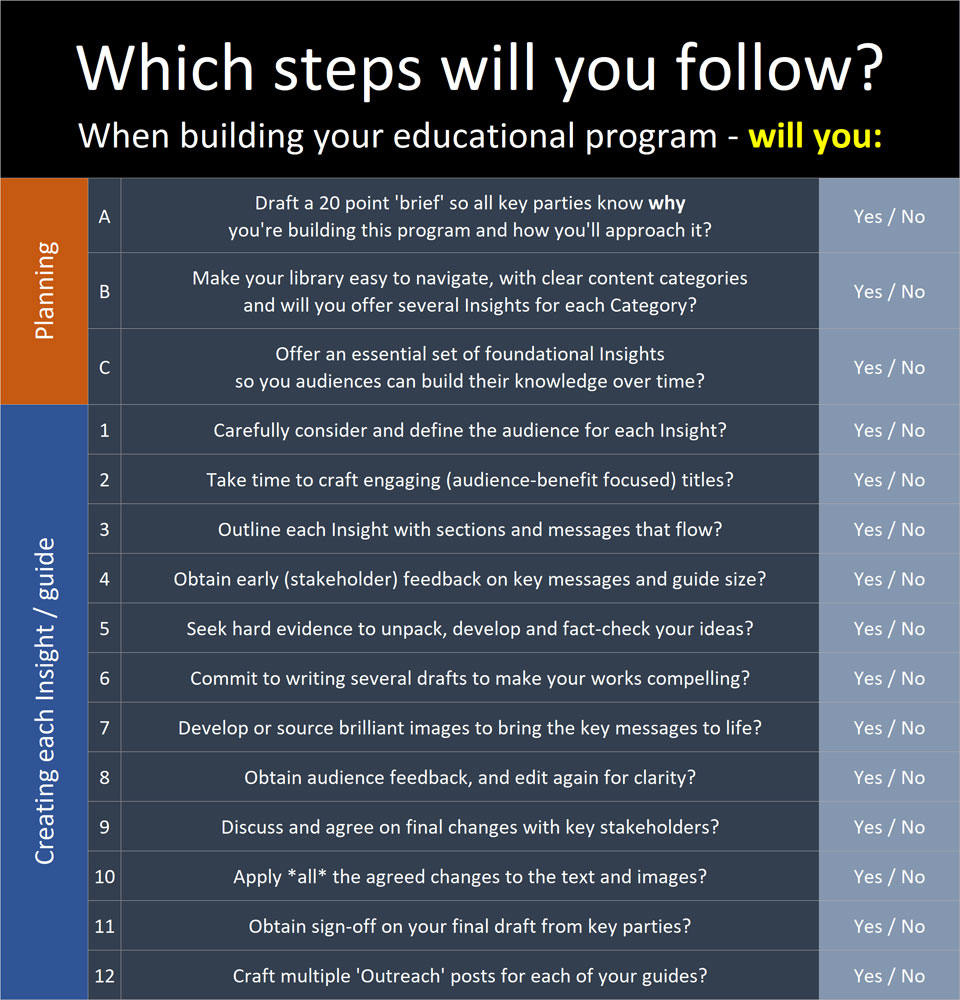 Would you like my help with the critical first stage of planning?
Would you like my help with the critical first stage of planning?
To help you develop that (20-point) brief for the work to be done to build your library?
If so, let’s meet online and talk about that.
Or email the subject line “LIBRARY PLAN” to hello@paulclaireaux.com, and we’ll get together from there.
Perhaps you’re already on the road to building (or have built) a sound library?
In which case, I congratulate you on overcoming these challenges.
Of course, like financial planning, the upfront cost is only part of the equation.
So, there’s one final (and potentially enormous) cost of content to consider.
What will your content maintenance cost?
You cannot ignore your content maintenance costs.
So, take your initial (library build) cost estimate, and double it*, for a rough idea of your total costs (for content creation and maintenance) over, say, ten years.
* Double it?
Yes, this assumes 10% of your library will need updating each year.
If you focus on topical content (like stock market updates), your maintenance costs could be significantly higher than this.
Doubling your initial costs to, say, £200,000, might be a conservative estimate!
Would you like to avoid most of these costs?
Whether it’s £100,000 or £200,000 – over 5 to 10 years – a library of well-maintained content could be a massive cost to your business.
And I’ve not even mentioned the additional, potentially huge costs of creating videos, webinars, or podcasts.
We can discuss those formats if you like. I write a lot of scripts for video explainers, and there are now many options for videos that don’t break the bank.
However, the format is not the issue here.
If you work with a skilled content creator, you’ll have all the words you need, written in a conversational style.
The words will work in any format you choose – which means:
- Your messages will be consistent across formats.
- You only pay once for content on all formats.
So, focus on getting top-quality Insights written in a plain English, conversational style.
Every other aspect of your content marketing is downstream of that.
Also, consider whether to create, buy or rent each piece of content.
What will give your clients and prospects Accurate, Balanced and Compelling Money Insights, at a price that works best for you?
In the next and final post in this series, I’ll outline the content options I offer.
In short, I’ll show you how you can avoid 50% to 95% of the costs we’ve seen here.
Follow me on LinkedIn and I’ll let you know when that post is live
And thanks for dropping in.



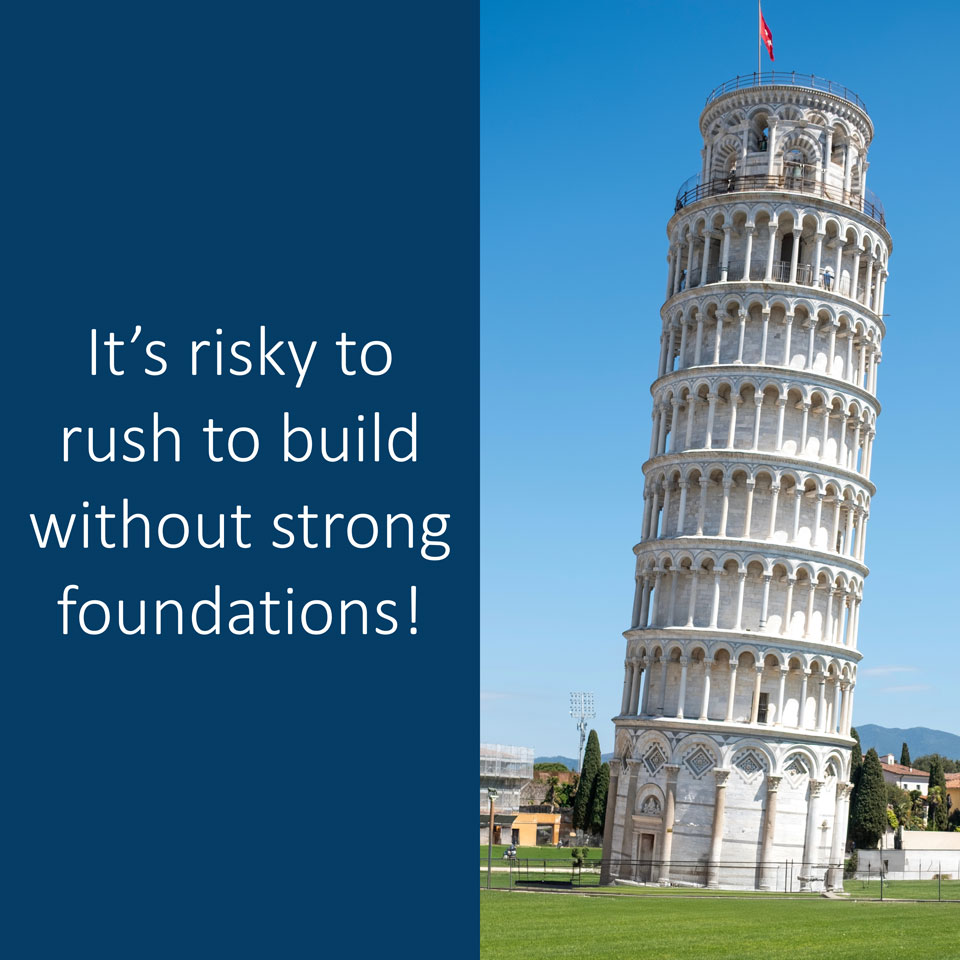

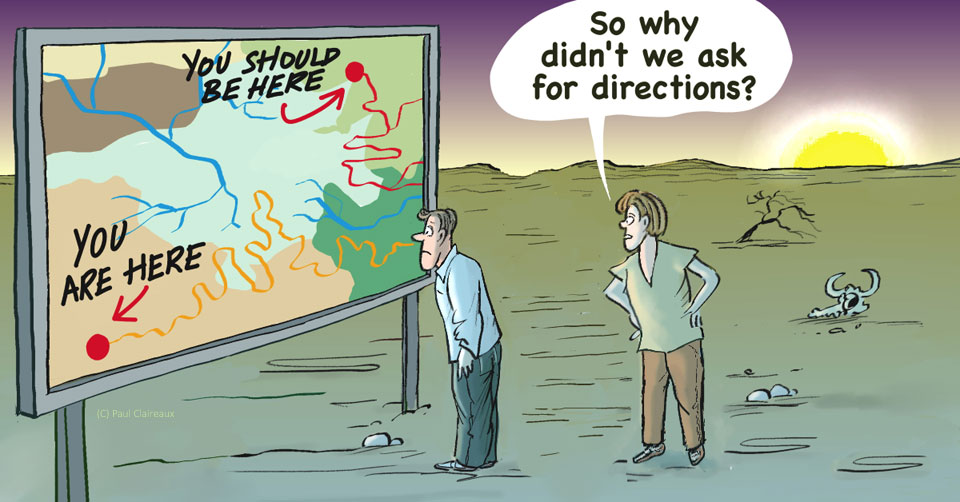
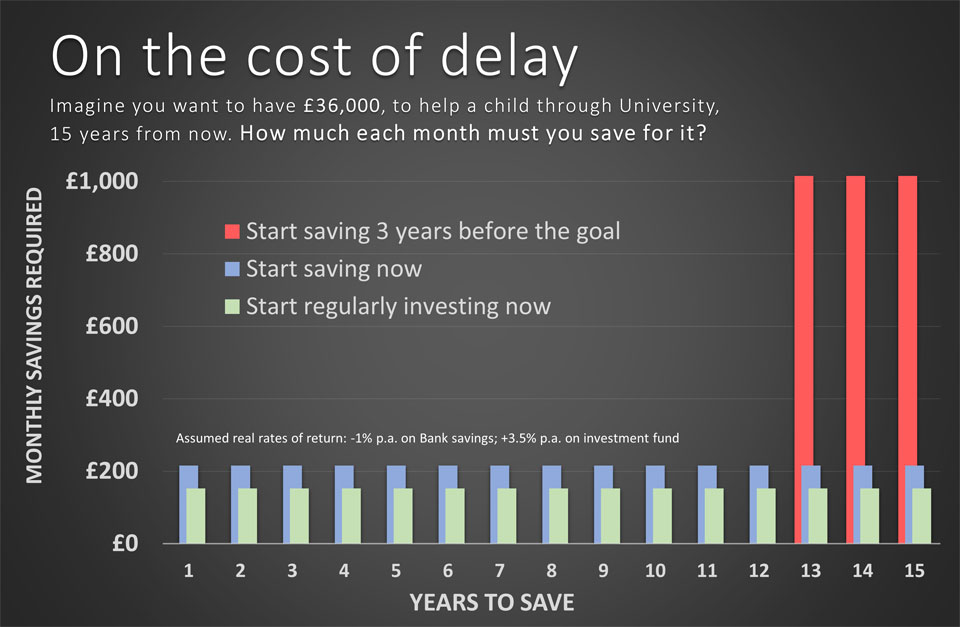
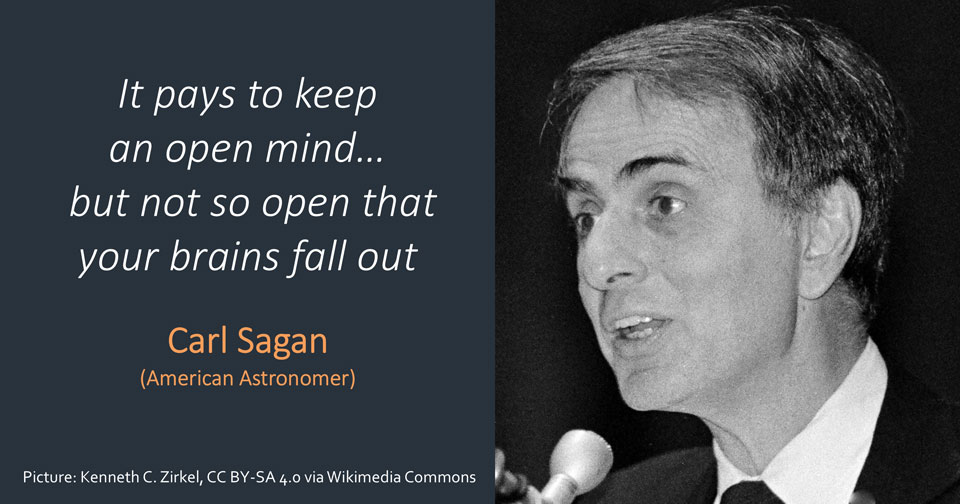

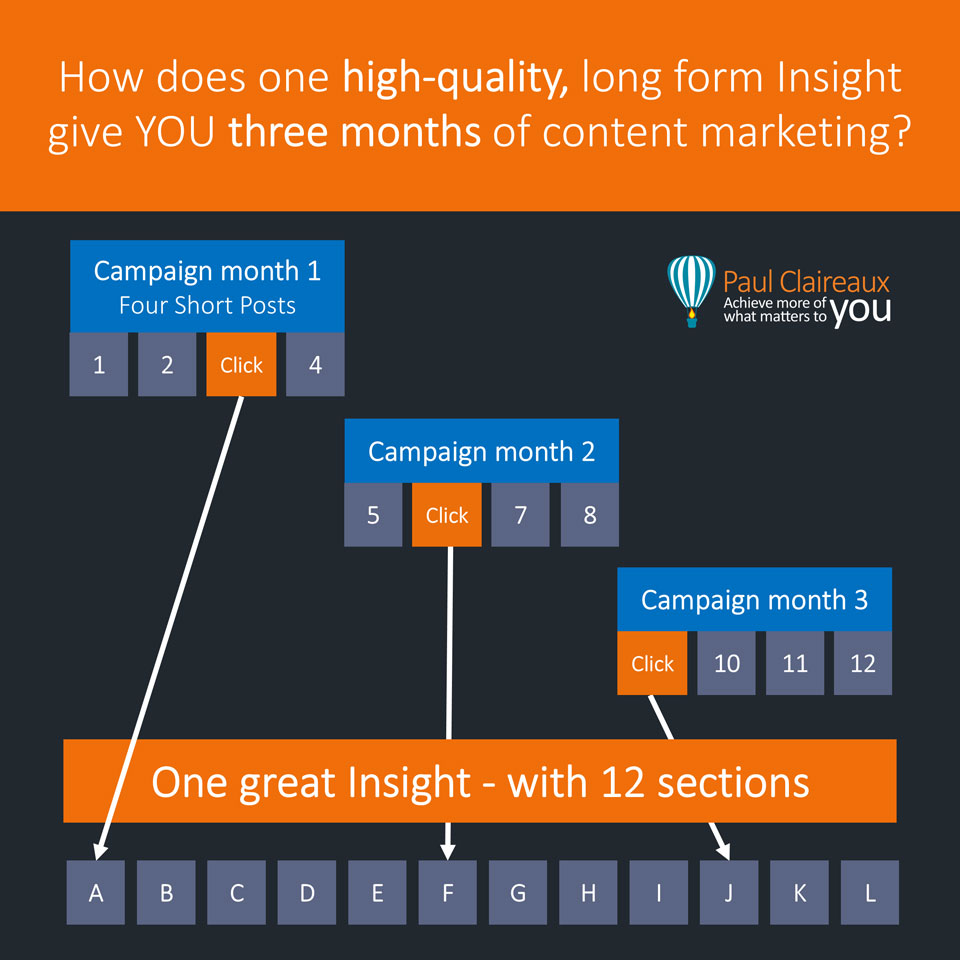

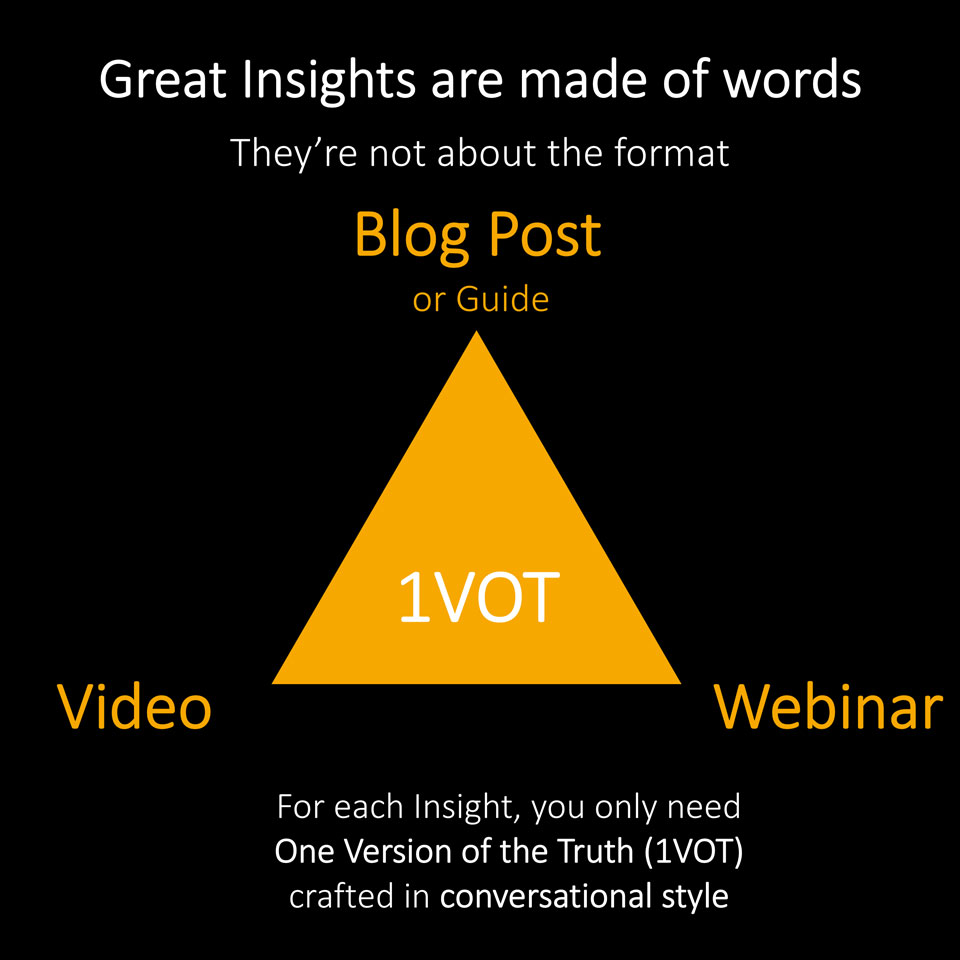
Discuss this article